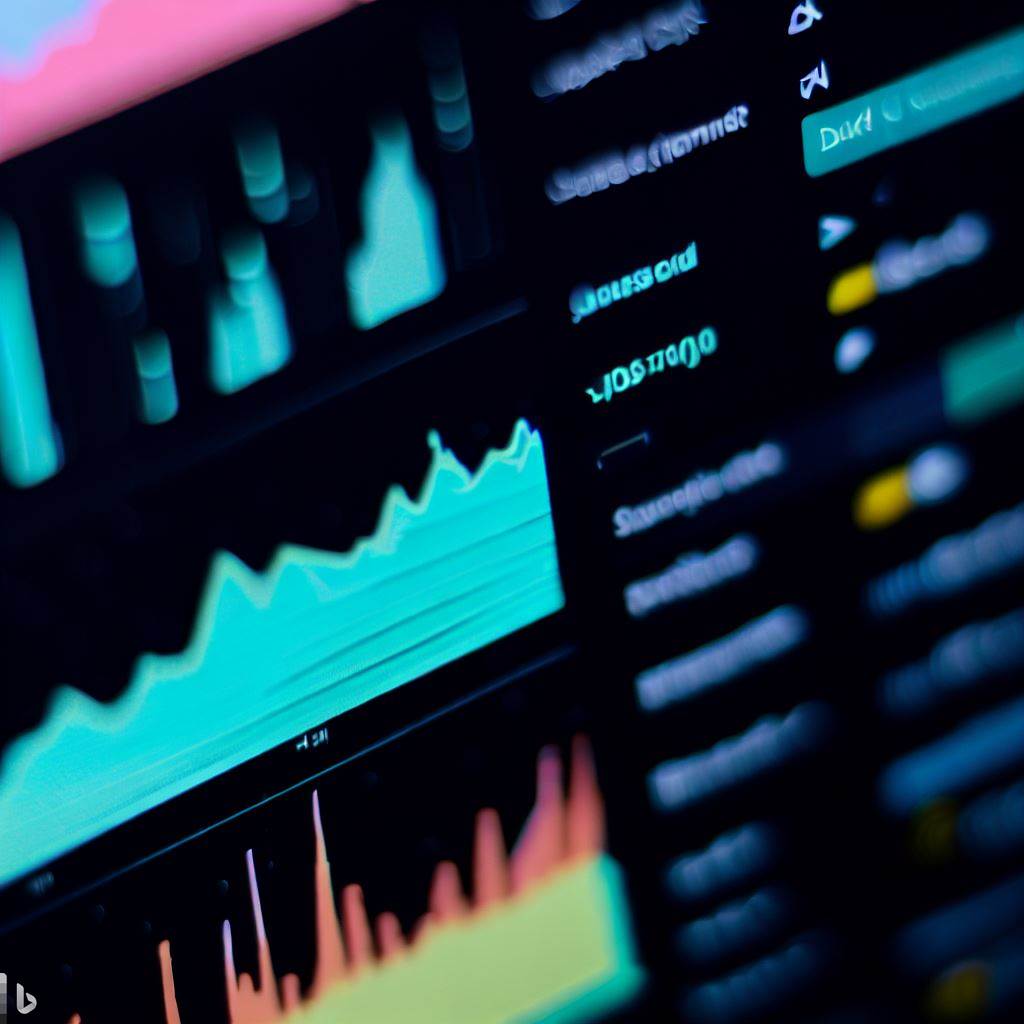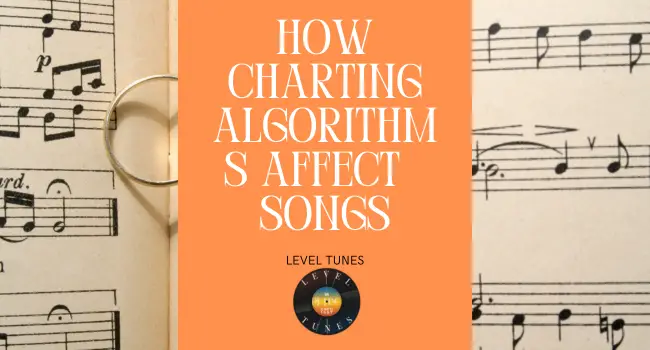Behind The Scenes Of Music Charts: How Charting Algorithms Affect The Popularity Of ‘Best’ Songs
Hey there fellow music enthusiasts!
Have you ever wondered what goes on behind the scenes of your favorite songs becoming chart-toppers?
Well, today we’re gonna dive deep into the world of charting algorithms and how they affect the popularity of ‘best’ songs.
As a music chart analyst, I’ve seen firsthand how these algorithms can make or break an artist’s career.
It’s not just about having a catchy tune or relatable lyrics anymore – it’s all about playing by the algorithmic rules to ensure maximum exposure and success.
So buckle up and let’s take a closer look at how these mysterious charts really work.
Table of Contents

Factors Considered In Charting Algorithms
As a music chart analyst, it’s important to understand the factors considered in charting algorithms.
Data sources play a crucial role since they provide the information needed to determine which songs are popular within a certain time frame.
Algorithm updates also affect the rankings as they can change how data is collected and analyzed.
However, genre bias must be taken into account as some genres may not receive fair representation on charts due to their popularity or lack thereof.
Regional differences are another factor that can impact chart rankings, as certain songs may be more popular in one area than another.
Lastly, there is always the possibility of chart manipulation where individuals or companies attempt to artificially inflate a song’s ranking through various means.
By considering all these factors, analysts can better understand why certain songs rank higher than others and make more informed predictions about future trends in the industry.

Weighting Of Data In Different Charts
As we discussed in the previous section, charting algorithms consider various factors when ranking songs.
However, it’s important to note that not all charts weigh data equally. Normalization techniques are often used to balance out differences in streaming metrics and regional variations, but genre bias can still play a significant role in determining which songs make it to the top of certain charts.
Additionally, historical data analysis is crucial for understanding how trends have evolved over time and predicting future hits. All these factors can affect a song’s popularity and success on the music charts, making it essential for artists and labels to understand the intricacies of each algorithm they want to target.

Impact Of Charting Algorithms On Song Success
When analyzing the impact of charting algorithms on song success, it’s crucial to consider various factors that contribute to a track’s popularity.
Algorithmic bias can heavily influence what songs are recommended and suggested to users, creating a snowball effect for those already in high positions.
Additionally, influencer marketing plays a significant role in pushing certain tracks into the forefront of popular culture, despite their true merit or appeal.
Streaming manipulation is another tactic used by record labels to artificially inflate streams and chart position.
Regional differences also come into play, as some areas may have different tastes and preferences than others.
However, at the end of the day, fan engagement remains an essential factor in determining which songs will ultimately succeed on music charts – loyal fans can drive stream numbers and sales through grassroots efforts and social media campaigns.

Controversies Surrounding Music Charts
As we discussed in the previous section, charting algorithms have a significant impact on the success of songs. However, it’s not always smooth sailing within the music industry when it comes to charts.
Chart manipulation is a common practice that can skew results and lead to false successes. Moreover, bias accusations are sometimes thrown around regarding certain artists or genres being favored over others. Genre bias can also play a role in how well a song performs on different charts.
Additionally, regional differences in listening habits can greatly affect which songs make it onto local charts versus global ones. Finally, historical discrepancies can arise as old data is updated or new methods of tracking sales and streams are implemented.
It’s important for us as analysts to remain aware of these controversies while interpreting chart data accurately and objectively for our audience.
Future Of Charting Algorithms In The Music Industry
Looking towards the future, it is clear that AI integration will continue to play a major role in music charting algorithms.
The ability to create personalized charts for each individual listener based on their listening habits and preferences has already been implemented by some streaming services.
However, as with any use of personal data, there are concerns about data privacy and ethical considerations surrounding how this information is used.
Additionally, industry competition may push for even more advanced and sophisticated charting algorithms that rely heavily on big data analysis.
As we move forward, it will be important for those in the music industry to balance these competing interests while still providing accurate and engaging music charts for listeners.
Frequently Asked Questions
How Are Charting Algorithms Developed And Who Is Responsible For Creating Them?
Algorithmic development is a critical component of music charting. It involves data analysis and industry influence, which can be influenced by cultural biases. The responsibility of creating these algorithms falls on the shoulders of experts who seek to make sense of trends in music consumption.
As a music chart analyst, it’s important to understand how these algorithms come into play when determining what songs are deemed ‘best’ or most popular. This process requires an intimate understanding of not only the charts but also the listeners themselves; this knowledge enables analysts to better predict listener behavior and adjust their algorithms accordingly.
Ultimately, successful algorithmic development ensures that our charts remain relevant and reflective of current musical tastes, while still accounting for potential bias within the industry itself.
How Do Charting Algorithms Take Into Account The Impact Of Social Media And Streaming Services On Music Popularity?
As a music chart analyst, I can tell you that the current H2 is all about understanding how influential social media and streaming services are in shaping music popularity.
In today’s world of viral marketing and the influence of influencers, it’s not just about traditional methods of promotion anymore. Charting algorithms now take into account streaming data and social media impact to see what songs are really resonating with audiences.
However, we must also be aware of algorithmic bias which could potentially skew results. It’s an exciting time for the music industry as technology continues to shape how we discover new artists and tracks, but we must always keep in mind the importance of human touch and connection when it comes to experiencing music intimately.
Can Charting Algorithms Accurately Reflect The Diversity Of Music Tastes And Genres?
When it comes to charting algorithms, there’s a lot of debate over whether they accurately reflect the diversity of music tastes and genres. Algorithm bias can lead to genre limitations and exclusion of niche genres from algorithmic ranking. Additionally, popularity is often prioritized over quality, which can create algorithmic barriers for music discovery.
As a music chart analyst, I believe it’s important for charting algorithms to take into account both popular hits and lesser-known gems across a variety of genres. By doing so, we can better understand the true landscape of music diversity and help listeners discover new artists outside their usual listening habits.
How Do Charting Algorithms Differ Between Different Countries And Regions?
When analyzing charting algorithms, it’s essential to consider the nuances that come with different countries and regions.
Data sources, cultural bias, language barriers, regional preferences, and market size all play a role in shaping these algorithms.
For example, some markets may prioritize certain genres or languages over others, leading to discrepancies between charts.
As music chart analysts, we must remain aware of these differences to accurately reflect the popularity of songs across various regions.
By doing so, we can better understand how charting algorithms impact the way people consume music worldwide.
Are There Any Potential Negative Effects Of Charting Algorithms On The Music Industry, Such As Discouraging Experimentation And Creativity In Artists?
As a music chart analyst, it’s important to consider the potential negative effects of charting algorithms on the industry.
One major concern is the risk of artistic limitations and stifling innovation in artists. When charts heavily favor certain genres or commercial bias, there is little room for experimentation and creativity.
This can lead to a lack of diversity in the industry and monopolization by a few top players. As an audience, we may not realize this subconscious desire for intimacy with fresh sounds until it’s too late – when all our favorite songs sound like they came from the same factory line.
It’s crucial that we keep pushing for fair and unbiased charting methods to encourage a diverse and thriving musical landscape.
All in All
As a music chart analyst, I can tell you that the development of charting algorithms is not an easy task. It requires a team of experts who are knowledgeable about data analysis and music trends. The responsibility for creating these algorithms falls on various organizations, such as Billboard in the US and Official Charts Company in the UK.
Social media and streaming services have revolutionized the way we consume music, but they also pose challenges to charting algorithms. These platforms allow for a more diverse range of artists to gain popularity, which means that there may be some discrepancies between what’s popular on the charts versus what’s trending online.
Despite these challenges, charting algorithms remain an essential tool for measuring the success of songs and albums across different genres and regions.
Thanks for reading
TBone




